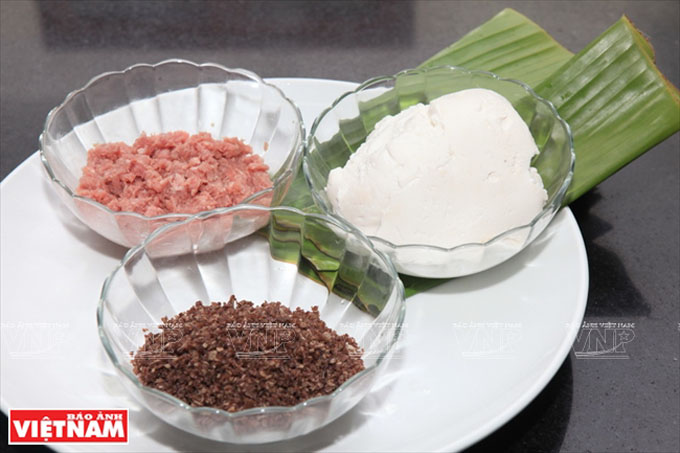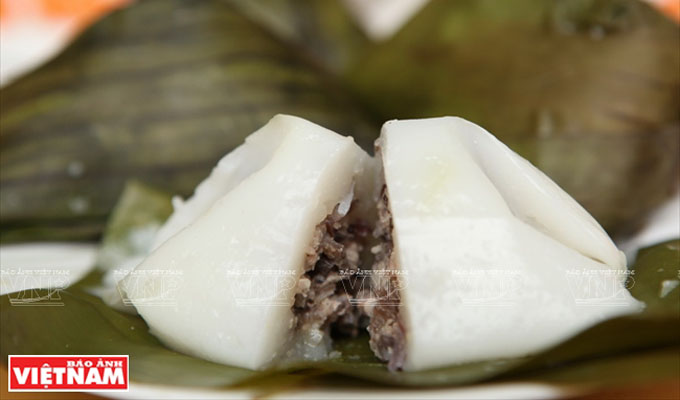Though different from pho in many ways, there is one trait banh gio (pyramid-shaped rice dumpling) shares with this popular dish: Hanoians can eat each of them at any time of the day. A plate of steaming banh gio sold at a stall on a street corner can be a quick breakfast. It can also be a decent mid-afternoon snack.

Ingredients to make banh gio include pork, wood ear and rice flour
Banh gio is a commoner's dish, sold at a low price, and can be found at many street-side eateries. It is easy to find a banh gio stall, especially near crowded places such as markets, schools or office buildings.
Vendors also sell banh gio at almost every corner in the labyrinth of streets in Ha Noi. There are many sellers riding their bicycles through the streets and crying "Ai banh gio nong day" (Who wants a hot banh gio?)
Banh gio is made from simple ingredients. The filling includes chopped wood ear and minced pork. They are stir-fried with shallots and seasoned with fish sauce and pepper. The outer skin is made by mixing rice flour with water and salt. The mixture is kneaded, stirred and cooked to form a thick, half-done substance.
Then, the rice dough is placed on a piece of banana leaf that has been soft-boiled or blanched. The filling is added before it is wrapped and folded into the shape of a pyramid.
Finally, it is put into boiling water for 60 minutes before draining.

The completed product
Finished products smell a little like banana leaf. When the cover is removed, the dumpling with a smooth white-transparent outer skin is exposed.
Normal as it is, banh gio still shows the elegance of Hanoians. It is something that cannot be eaten in a rush. It should be enjoyed slowly so eaters can taste the soft pork and crunchy wood ear made delicious by with spices.